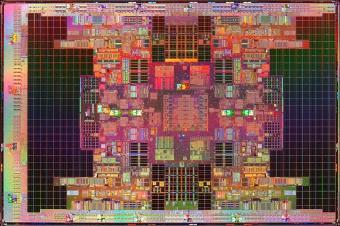Processors overcame two billion transistors

Intel has released the first chip containing more than 2 billion transistors.
The quad-core processor, known as Tukwila, is designed for use in powerful servers.
Its clock frequency is at 2 GHz, which is equivalent to a standard processor for personal computers.
')
Thus, the next milestone in the chip production technology has been overcome. The first processor, containing more than a billion transistors, was released by Intel in 2006.
The chip industry is governed by Moore's law, formulated by Intel co-founder Gordon Moore in 1965.
This law states that the number of transistors that can be placed on a fixed-cost microchip doubles every two years.
In 2004, the equivalent processor contained 592 million transistors.
Although the new processor contains more than 2 billion transistors, it operates at a relatively modest speed of 2 GHz, with many PC processors running.
Last year, IBM released the fastest commercial microcircuit with a clock frequency of 4.7 GHz.
Most of the additional transistors on the new Intel processor are used for memory and registers.
This allows you to implement an efficient architecture designed for fast data processing.
The closer to the processor is the cache memory containing the data to be processed by the processor, the faster the data is processed. Early microprocessors did not have a cache memory in its composition, it was all located on separate chips. Now they contain as much cache memory as the processor chip can accommodate.
The new processor also follows the current trend aimed at reducing energy consumption.
Intel is also releasing a new ultra mobile processor, known as Silverthorne.
This processor is based on the latest Intel technology and contains objects as small as 45 nanometers (billionths of a meter).
The Tukwila processor is based on 65 nanometer technology.
Both processors will be shown at the International Solid State Circuits Conference ISSCC in San Francisco this week.
Source: https://habr.com/ru/post/31409/
All Articles